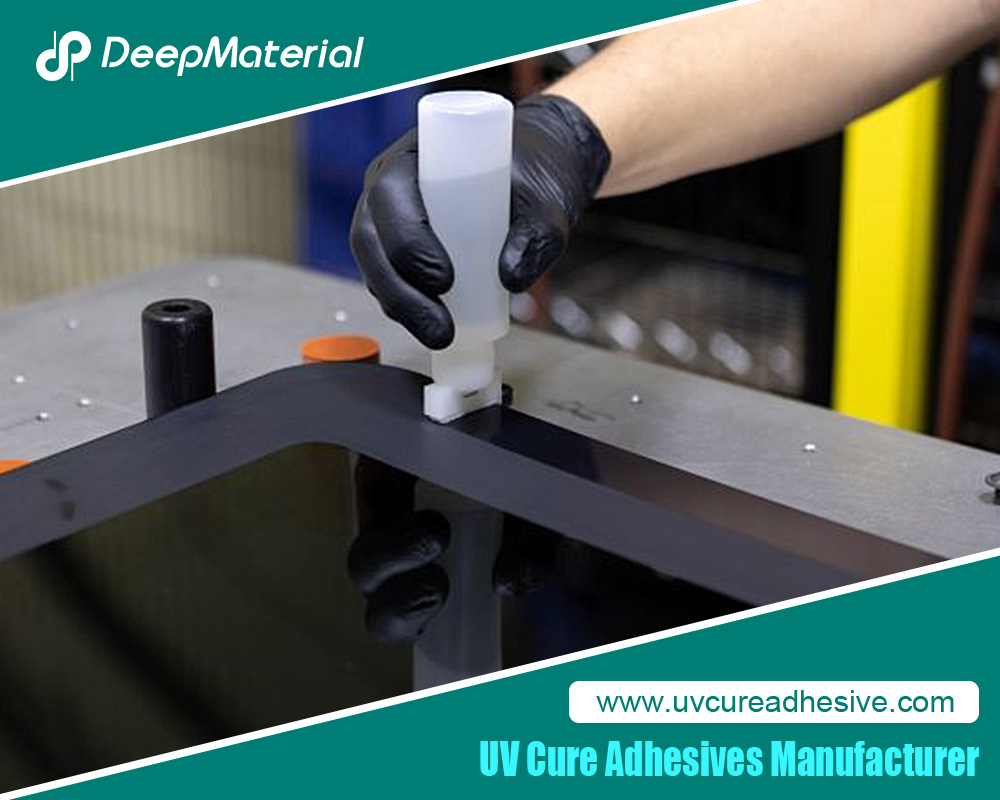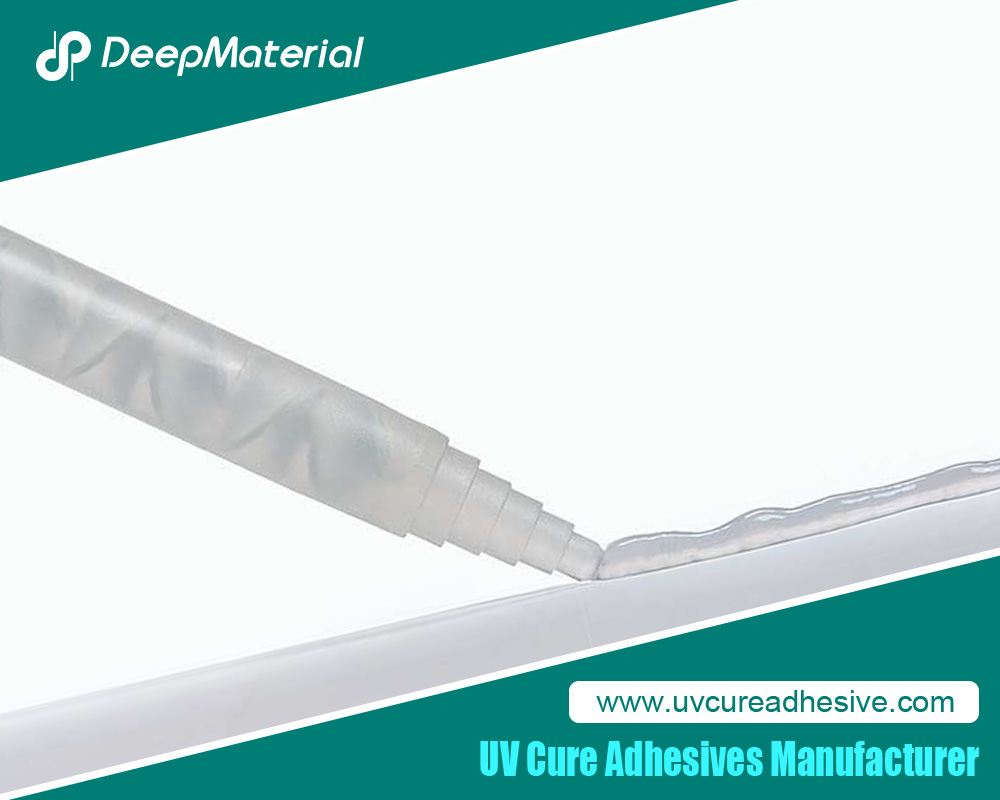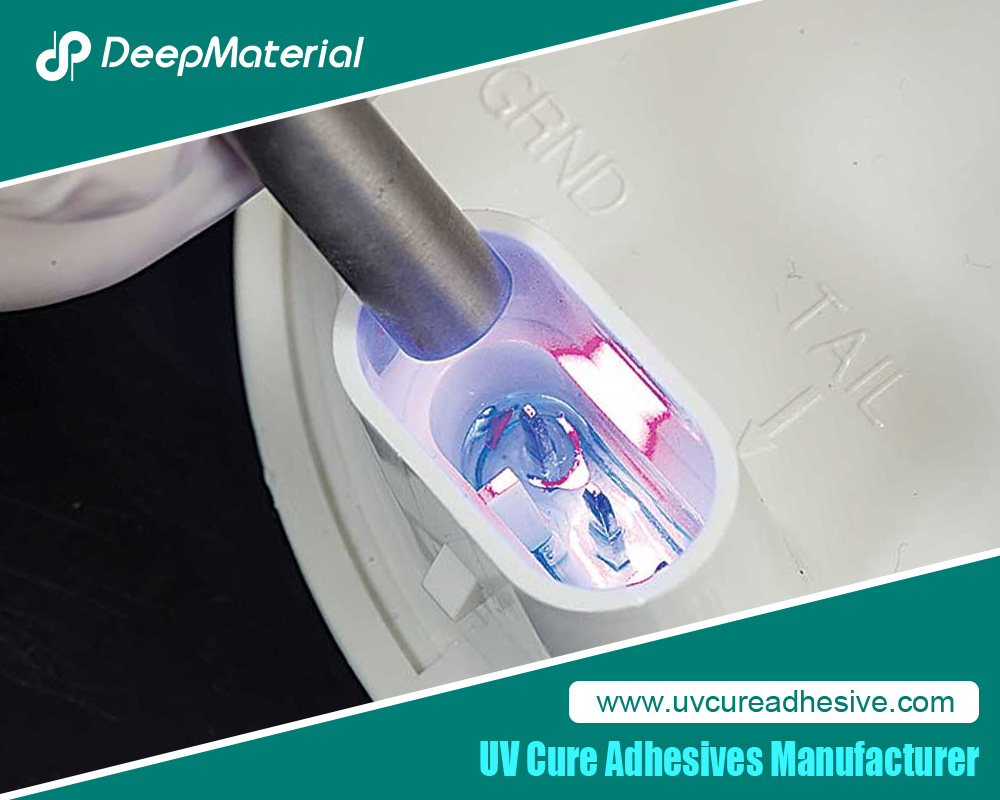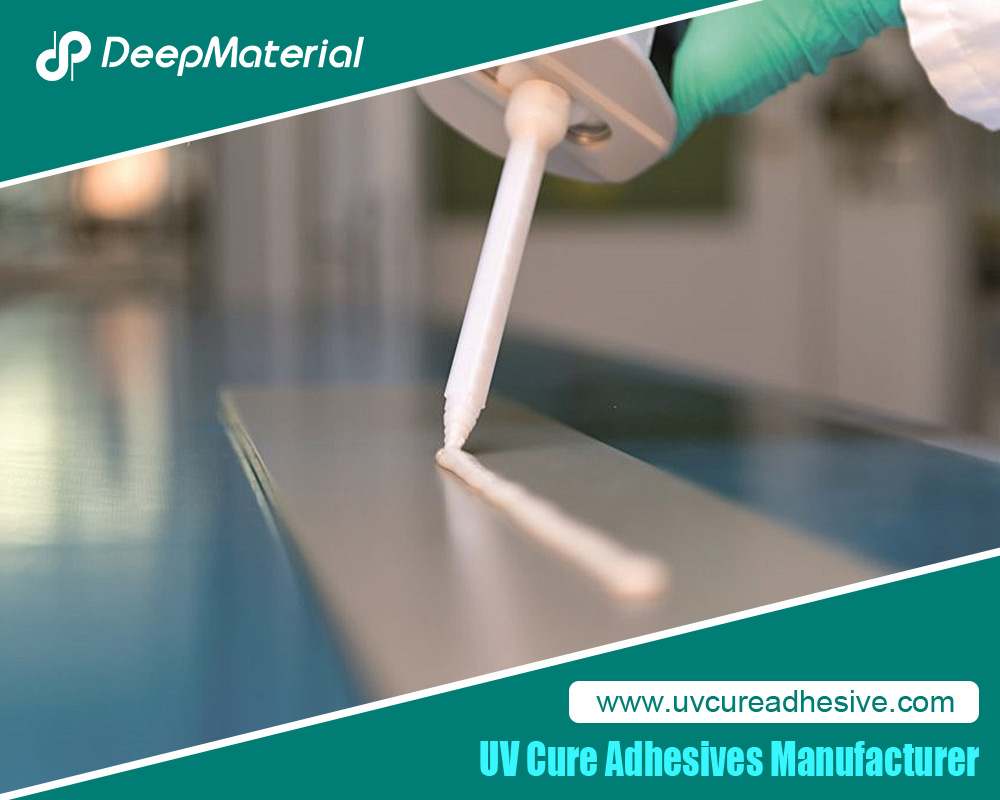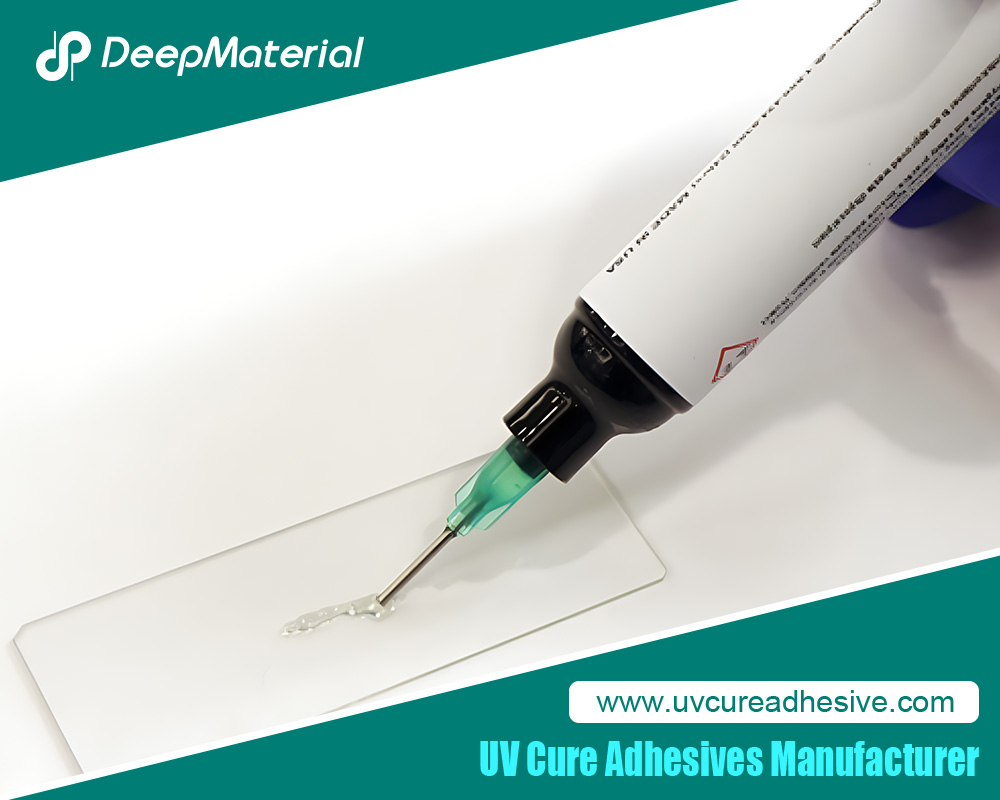Technical Article on Adjusting the Formulation to Reduce Optical Interface Reflection When the Refractive Index of Cured Glue Does Not Match That of the Substrate
In the manufacturing of optical devices and optical assembly processes, UV glue serves as an important bonding material, and its optical properties after curing are crucial to the entire optical system. When there is a difference between the refractive index of the cured glue and that of the substrate, light will be reflected at the interface, resulting in problems such as light energy loss and a decline in imaging quality. Therefore, adjusting the UV glue formulation to achieve refractive index matching with the substrate is the key to reducing optical interface reflection and improving the performance of the optical system.
Principle of Refractive Index Matching
The reflection of light at the interface between different media follows Fresnel’s law. The reflectivity R is related to the refractive indices n_1 and n_2 of the two media, and the formula is R = \left(\frac{n_2 – n_1}{n_2 + n_1}\right)^2. It can be clearly seen from the formula that the smaller the difference between the refractive index n_1 of the cured glue and the refractive index n_2 of the substrate, the lower the reflectivity R. When n_1 = n_2, the reflectivity R is 0, and at this time, complete optical interface matching is achieved, and there will be no reflection loss. Therefore, the core objective of adjusting the UV glue formulation is to make the refractive index of the cured glue as close as possible to that of the substrate.
Analysis of Basic Factors for Adjusting the Glue Formulation
Selection of Monomers and Prepolymers
Monomers and prepolymers are the main components of UV glue, and their chemical structures and properties directly determine the refractive index of the cured glue. Generally speaking, monomers and prepolymers containing aromatic groups (such as benzene rings) often have a higher refractive index due to their higher electron cloud density. For example, acrylate prepolymers with a bisphenol A structure usually have a refractive index between 1.5 and 1.6. In contrast, monomers and prepolymers with an aliphatic structure have a relatively lower refractive index due to their relatively lower electron cloud density. For instance, the refractive index of polyethylene glycol diacrylate is approximately 1.45.
In the actual formulation adjustment, if the refractive index of the substrate is high, monomers and prepolymers containing aromatic structures can be selected as the base resin. If the refractive index of the substrate is low, aliphatic or fluorinated monomers can be chosen. Fluorinated monomers can significantly reduce the refractive index of the glue due to their unique low polarizability and low cohesive energy density, and they are often used in the preparation of low-refractive-index UV glue.
Addition of Fillers
Fillers play an important role in the adjustment of the UV glue formulation. Some inorganic fillers, such as titanium dioxide ( TiO_2), zirconium dioxide ( ZrO_2), etc., have a relatively high refractive index (the refractive index of TiO_2 is approximately 2.5 – 2.7). Adding them to the glue can effectively increase the refractive index of the cured glue. By controlling the particle size, addition amount, and dispersibility of the fillers, the refractive index of the glue can be precisely adjusted. Fillers with a smaller particle size are more conducive to uniform dispersion, avoiding problems such as optical inhomogeneity and scattering caused by filler agglomeration.
Conversely, some organic fillers or hollow microspheres, such as polystyrene hollow microspheres, have a lower density and refractive index and can be used to reduce the refractive index of the glue. At the same time, hollow microspheres can also reduce the density and shrinkage rate of the glue, improving the comprehensive properties of the glue.
Formulation Adjustment Strategies for Different Substrates
Glass Substrate
The refractive index of glass is usually between 1.4 and 1.7, and the specific value depends on the composition of the glass. For high-refractive-index glass (such as optical glass, with a refractive index that can reach 1.7 – 1.9), in the formulation design, acrylate prepolymers containing aromatic structures can be selected, and high-refractive-index inorganic fillers such as TiO_2 and ZrO_2 can be added. To ensure the uniform dispersion of the fillers, surfactants can be used to modify the fillers to enhance the compatibility between the fillers and the resin matrix. At the same time, select an appropriate dispersion process, such as ultrasonic dispersion or high-speed stirring dispersion, to ensure that the fillers are evenly distributed in the glue.
For low-refractive-index glass (such as ordinary float glass, with a refractive index of approximately 1.52), aliphatic acrylate monomers can be used as the base resin, and an appropriate amount of low-refractive-index organic fillers or hollow microspheres can be added to reduce the refractive index of the glue. In addition, monomers containing siloxane structures can be introduced. By utilizing the low polarizability characteristics of the silicon-oxygen bonds, the refractive index of the glue can be further reduced to achieve a match with the low-refractive-index glass.
Plastic Substrate
There is a wide variety of plastic substrates, and their refractive indices vary greatly. For example, the refractive index of polycarbonate (PC) is approximately 1.58, while that of polymethyl methacrylate (PMMA) is approximately 1.49. For plastic substrates with a relatively high refractive index such as PC, in the formulation adjustment, methods similar to those for matching with high-refractive-index glass can be adopted, and resins containing aromatic structures and high-refractive-index fillers can be selected. However, it should be noted that the surface properties and thermal properties of plastic substrates are different from those of glass, and the glue formulation also needs to consider the compatibility with the plastic substrate and the matching of the coefficient of thermal expansion to avoid adhesive failure caused by thermal stress.
For low-refractive-index plastic substrates such as PMMA, in addition to selecting aliphatic monomers and low-refractive-index fillers, the cross-linking density and molecular chain structure of the glue can also be controlled by adjusting the polymerization reaction conditions, thereby affecting the refractive index of the glue. A lower cross-linking density usually results in a lower refractive index of the glue, but it may also affect the mechanical properties of the glue. Therefore, a balance needs to be found between the refractive index and the mechanical properties.
Metal Substrate
Metals themselves are not optically transparent, but in some optical applications, the metal surface will be covered with a transparent optical film or coating. At this time, the glue needs to match the refractive index of these optical films. Since there are various types of optical films on the metal surface, the formulation adjustment needs to be designed according to the specific composition and refractive index of the film. Generally speaking, formulation adjustment strategies similar to those for glass or plastic substrates can be adopted, but the adhesion between the glue and the metal surface also needs to be considered. Coupling agents with special functional groups, such as silane coupling agents and titanate coupling agents, can be added to the formulation to enhance the chemical bonding between the glue and the metal surface and improve the adhesive strength and stability.
Other Influencing Factors and Solutions
Influence of the Curing Process
The curing process of UV glue also has an important influence on its final refractive index. Incomplete curing or overcuring will both lead to deviations in the refractive index. When the curing is incomplete, the unreacted monomers and oligomers remaining in the glue will affect the ordered arrangement of the molecular chains and the cross-linking density, resulting in an unstable refractive index. On the other hand, overcuring may cause excessive cross-linking and degradation of the molecular chains, which will also change the refractive index of the glue.
To ensure that the glue reaches the optimal refractive index during the curing process, the curing conditions need to be precisely controlled, including the wavelength, light intensity, and irradiation time of the UV light source. Different UV initiators have different absorption efficiencies for UV light of specific wavelengths. Therefore, the appropriate UV light source should be selected according to the type of initiator in the formulation. At the same time, optimize the irradiation time and light intensity through experiments to ensure that the glue is fully cured without excessive cross-linking.
Influence of Environmental Factors
Environmental factors such as temperature and humidity will also have an impact on the refractive index of the cured glue. Temperature changes will cause thermal expansion or contraction of the glue and the substrate, thereby changing the stress state and optical properties at the interface. When the humidity is high, the hydrophilic groups in the glue may absorb moisture, resulting in swelling of the molecular chains and changes in the refractive index.
To reduce the influence of environmental factors, additives with good thermal stability and water resistance can be added during the formulation design. For example, adding thermal stabilizers can improve the thermal stability of the glue and reduce the influence of temperature changes on the refractive index. Adding water repellents or waterproof agents can enhance the water resistance of the glue and prevent the interference of moisture on the refractive index.
Experimental Verification and Optimization
After completing the preliminary formulation design, the refractive index of the glue needs to be accurately measured and verified through experiments. Commonly used refractive index measurement methods include the Abbe refractometer measurement method and the ellipsometer measurement method. The Abbe refractometer is easy to operate and is suitable for routine refractive index measurement, while the ellipsometer has higher measurement accuracy and can measure the refractive indices of thin films and multi-layer structures.
According to the experimental measurement results, further optimize and adjust the formulation. By gradually changing the types and amounts of monomers, fillers, or additives, observe the change trend of the refractive index until the refractive index of the cured glue achieves a good match with that of the substrate, effectively reducing the optical interface reflection. At the same time, comprehensive performance tests, including adhesive strength, optical transmittance, thermal stability, etc., also need to be carried out on the optimized glue to ensure that it meets the actual application requirements.
Conclusion
By reasonably selecting and adjusting the components such as monomers, prepolymers, and fillers in the UV glue formulation, and combining the control of the curing process and environmental factors, the problem of optical interface reflection caused by the mismatch between the refractive index of the cured glue and that of the substrate can be effectively solved. In practical applications, it is necessary to consider various factors comprehensively according to the characteristics of different substrates and carry out targeted formulation design and optimization. Through continuous experiments and improvements, UV glue with a good refractive index match with the substrate can be prepared, improving the performance and reliability of the optical system and meeting the growing technical requirements of the modern optical field.
For more about choosing a comprehensive guide to technical article on adjusting the formulation to reduce optical interface reflection when the refractive index of cured glue does not match that of the substrate, you can pay a visit to DeepMaterial at https://www.uvcureadhesive.com/ for more info.

